Please visit Marketing Land for the full article.
Friday, September 30, 2016
Clinton wins Grubhub presidential 'debate' as diners cast votes with special discount codes
Please visit Marketing Land for the full article.
How Analytics Is Transforming Customer Loyalty Programs
Customer loyalty programs are crucial.
The goal of loyalty initiatives is to engage, not pander more products to frequent buyers.
But how do you determine if your loyalty program is working well?
Use data to steer your customer loyalty program in the right direction.
McKinsey found that “executive teams that make extensive use of customer data analytics across all business decisions see a 126% profit improvement over companies that don't.”
“By instituting a loyalty program, you not only improve customer appreciation of your business, but you also increase the chances that existing clients will share this joy with those close to them,” says Steve Olenski, a senior creative content strategist at Oracle Responsys.
Upgrade your loyalty program. Let's explore how.
Focusing on Retention
One primary mission of loyalty programs is to increase customer retention. You want buyers to remain with your brand after they make a purchase.
For your business, higher retention means a steady flow of revenue. And it cuts down on your costs to constantly acquire new customers.
Therefore, your loyalty programs must be effective. They need to serve a real purpose for the consumer, not just your bottom line.
To provide the best customer experience, fuse data into your retention strategies. It will impact how your team approaches the buyer.
“Influencing customer loyalty in this way doesn't require magic, it requires data – usually data that you already have but aren't using to full advantage. Regardless of industry, most organizations today generate mountains of data,” writes Mike Flannagan, vice president and general manager of Cisco.
Uncover the correlation between customer characteristics and purchasing behavior. Assign your team to analyze the current data of your most valuable customers. And learn which characteristics these customers have in common and which traits are dissimilar.
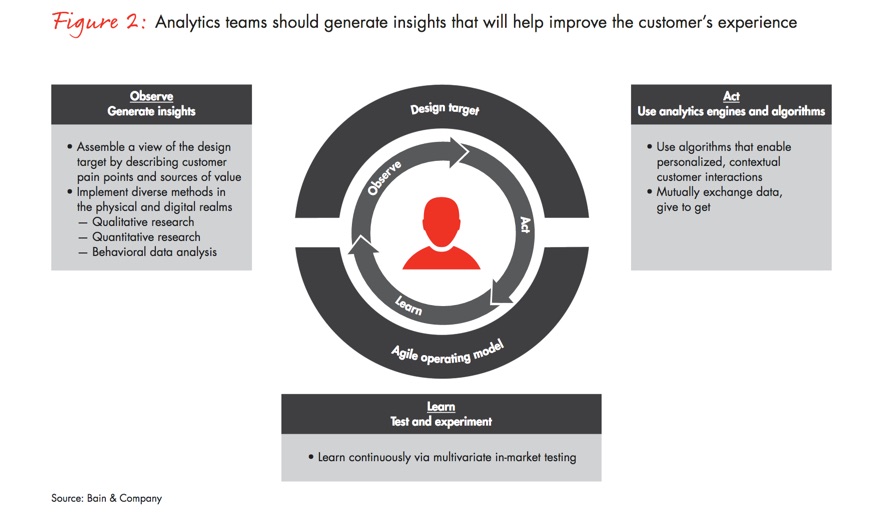
Consider data an ongoing process of observing, acting, and learning. Improve your loyalty programs by taking action on your insights. Measure success by monitoring your customer lifetime value, loyal customer rate, and redemption rate.
Start with retention. And let the data guide you to customer loyalty.
Targeted Product Recommendations
Research shows that “customers that are actively engaged with brands and their loyalty programs make 90% more frequent purchases, spend 60% more in each transaction and are five times more likely to choose the brand in the future.”
Sending targeted product recommendations is one way to keep customers engaged. Because if they are not receptive to certain products, consumers will feel more inclined to take their business elsewhere.
Integrate real-time purchase data with historical purchase data to make specific recommendations. For example, if a small business bought payroll software from you, their team might be interested in purchasing your series of on-demand accounting webinars.
“Consumer data must be analyzed to create highly targeted product recommendation offers. Analyze consumer data such as demographics, lifestyle, products purchased by category and type, frequency of purchase, and purchase value,” states Larisa Bedgood, director of marketing at DataMentors.
It's key not to draw wild conclusions from one piece of data. Just because a Florida resident buys a winter coat doesn't mean he wants to be flooded with similar recommendations. The consumer might have bought it as a gift for a friend living in Michigan.
So, gather multiple data points in order to make intelligent recommendations. You don't want to frustrate loyal customers.
Your brand also can take a different approach. Use social proof to your advantage. If consumers are hesitant about particular products, remind them that other people are buying the product, too.
Home Depot uses this tactic by displaying a list of bestselling inventory. It persuades the customer to join the crowd.
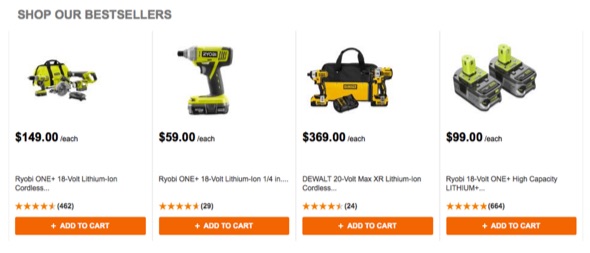
Sift through your analysis reports. Uncover the best product recommendations for your customers.
Timely Promotions
For customers, loyalty takes effort. They receive lots of promotional ads everyday to try products from other brands. Appreciating your consumer's urge to resist the hype is important.
Mobile phone carriers lead the way in baiting consumers to switch their services. AT&T offers cell phone users up to $650 in credit just to say bye to T-Mobile, Sprint, or Verizon.
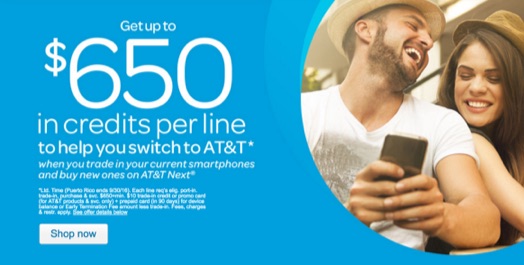
To keep their loyalty, customers will hold your team accountable. They expect timely promotions that not only fit their buying habits but also their lifestyles.
At the end of the day, you want to deliver the right offer at the right time. This will increase the likelihood of the promotion redemption.
Monitor the sales data to learn when promotional codes are redeemed. Do your consumers use promotions more often in the morning? Right after a sales announcement? Or during summer months?
“By creating a time-sensitive sales promotion and having a good grasp on your target customer demographic, you'll be able to incentivize the right actions, get them to respond, and grow your business in the process,” states Humayun Khan, former content marketer at Shopify.
Moreover, analyze your reports to discover the best product promotions. A timely discount matched with the wrong product won't be useful for the consumer or your company.
Segment your customers to offer relevant discounts for multiple channels-in-store, online, and mobile. Every loyalty member doesn't have to receive the same offer.
For instance, Starbucks offers its Gold members the opportunity to earn double stars. The coffee company surprises its loyal consumers on a different day each month. This technique increases the excitement and prepares customers to spend more money on a particular day.

Don't wait for your competitor to offer your customers a good deal. Start creating your own timely promotions.
Personalized Rewards
Everyone likes to be rewarded. It signifies that you've done something commendable. And incentives compel you to continue the rewarded behavior.
Recognize the value of your customer's actions. Because that's what you're rewarding.
You can offer perks based on monetary transactions, shopping frequency, or even survey responses. It's all about showing appreciation for consumers' actions.
But it's your team's job to appropriately reward customers. Don't expect people to buy $1000 worth of services in one month if your highest service retails at $10.
In addition, manage your loyalty members' expectations. They shouldn't expect your brand to give away free Beyonce tickets every day.
Personalized rewards ensure you're giving your customers what they desire. It also shows that you are truly invested in the customer experience.
Send a simple email survey asking consumers what types of incentives excite them. Or conduct social media listening to identify useful prizes that can make your customers' lives better.
Dick's Sporting Goods sends emails asking customers for their opinions. The company uses the information to improve its inventory and customer service.
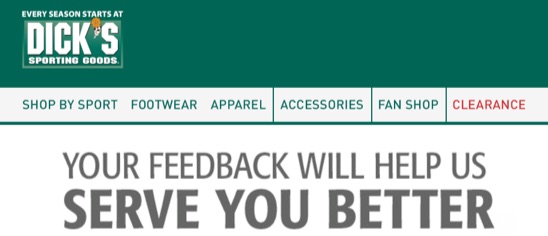
Remember to focus on maintaining positive relationships with your consumers. Because that's the ultimate goal for loyalty initiatives.
You want people to feel comfortable with your brand. Aim to offer rewards that bridge the gap between the consumer-brand relationship.
“A significant aspect of customer loyalty comes down to your likability. People will almost always remain committed to a brand if they believe they've developed a genuine and mutually beneficial relationship,” says Entrepreneur contributor Dave Thompson.
Tailor your rewards to satisfy your customers. Offer them something special.
Analyze Customer Loyalty
Customer loyalty can lead to retention. That's why your team must use data to drive your loyalty programs.
Give consumers targeted product recommendations they can't resist. Send promotions at the right time. And personalize rewards so the customer feels part of the brand.
Look at the data. Improve customer loyalty programs.

Did you know? With Kissmetrics, you can find your most valuable customer segments. Analyze customer behavior to understand where they're coming from and how to acquire more of your best customers.
About the Author: Shayla Price lives at the intersection of digital marketing, technology and social responsibility. Connect with her on Twitter @shaylaprice.
Brand Ambassadors: Choosing and Maintaining a Relationship with the Right Person
Brand Ambassadors: Choosing and Maintaining a Relationship with the Right Person written by Guest Post read more at Duct Tape Marketing

photo credit: Underwear for Men
Brand ambassadors are a great way for any company to grow its online and offline business. A brand ambassador is defined as someone who is passionate about a brand or product and shares their love on their own accord.
As more business transactions are conducted online, the consumer journey gets further fragmented. Having a strong brand ambassador program has become an increasingly important part of your marketing campaigns for two reasons:
- Even in the digital age, people want to do business with people. A brand ambassador adds a human element to your marketing initiatives and offers someone your prospective and current customers can relate to when they see and hear your messaging.
- To effectively grow and maintain a social media presence it takes a lot of content and requires a great deal of engagement to ensure the people that matter actually see your messaging. A brand ambassador can help support content creation, broaden your reach and even add credibility to your brand.
The following outlines best practices for choosing and maintaining a relationship with the right brand ambassador.
How to Select a Brand Ambassador
A brand ambassador's sole purpose is to present your company in a positive light. A brand ambassador should be someone that gets people excited about your company and gets them drinking your brand's Kool-Aid.
When the right person is selected, a brand ambassador will increase overall brand awareness and sales. If your brand ambassador is going to be the face and the voice of the company, select someone that represents your customers. The ambassador has to be someone they can relate to.
If you want your brand ambassador to help grow your social media presence, select someone with a large network of active social media followers, but make sure those followers represent your customers too.
Since not all marketing budgets allow for top dollar endorsements deals, a brand ambassador isn't just someone you hire to be your spokesperson. A brand ambassador program can include your customers and employees.
When targeting your customers to become brand ambassadors, it is important to define what you want them to do. Brand ambassadors can appear in ad campaigns, give testimonials, attend corporate events, write content, submit photos featuring your products, and so much more.
Once you determine the role, invite your customers to participate in the evolution of the brand. You can do this by sending email blasts, and by posting messages on your website and social media profiles.
At the start of the year, my company created a contest to search for our next brand ambassador. To find someone that truly represented our customers, we leveraged our Facebook fans. We quickly discovered our customers were thrilled to submit photos and videos that we could use in our marketing efforts. The program continues to evolve and now includes a dedicated page on our website that allows customers to submit photos and videos in return for discounts and complimentary product.
In addition to customers, another great place to find ambassadors is within your company. The person at the top, the person who answers the messaging apps, and the person who makes the sales calls, has the power to be an effective brand ambassador, once you arm them with the right tools.
By meeting regularly, you can ensure everyone says the same things about the company. Share corporate success stories and anecdotes so they can craft a message that is natural for them to share while they are going about their day. Encourage them to support all of your social media efforts by publishing a calendar of key dates and promotions.
What Should You Expect to Pay
When hiring someone an ambassador, in addition to compensation for duties, it is typical for a company to pay travel expenses (i.e., flight, hotel and rental car) to and from events. Some ambassadors require first class flights and per diem. Be sure to create a contract outlining everyone's expectations.
While brand ambassadors can be paid for their work, not all require compensation. Some do it because they simply love your brand. If you are compensating for participation, evaluate the investment the same as any other form of media - what you put out should be proportional to what you put in. If you are not compensating for participation, make sure your brand ambassadors have access to free product and other perks you can throw their way.
Maintaining a Relationship
Maintaining a relationship with a brand ambassador requires relationship building. You should regularly check in with your ambassadors to ensure they are still “excited” about your company. Once a month is a good place to start to ensure you are not over or under-communicating
It is very important for your ambassadors to know what is expected of them. In the contract outlining your expectations, include a work and event schedule. If they are generating content for your website, make sure they know the deadlines and send reminders. If they are attending events, make sure they know what to wear, who to talk to, and what to say.
When someone knows they are helping move the needle, it motivates them. Be sure to send event follow-ups and clippings (photo and video recaps). Make sure they are the first ones to know about company news.
The key to growing any corporation lies in having a strong team that can execute with results. Whether you decide to hire an outside spokesperson, engage customers or leverage employees, it comes down to consistency and dependability. If the messaging is consistent and the promises made are things your customers can depend on, your brand ambassadors' efforts will generate results.
 John Polidan is the Chief Executive Officer of Underwear For Men and regularly offers advise to startups and entrepreneurs on business leadership, marketing, prototypes, patents and lean manufacturing. To read John's startup story, visit: www.ufmunderwear.com. For his LinkedIn profile, visit: https://www.linkedin.com/in/john-polidan-42936715
John Polidan is the Chief Executive Officer of Underwear For Men and regularly offers advise to startups and entrepreneurs on business leadership, marketing, prototypes, patents and lean manufacturing. To read John's startup story, visit: www.ufmunderwear.com. For his LinkedIn profile, visit: https://www.linkedin.com/in/john-polidan-42936715
Is This the Next Step in Marketing Automation?
Friday Five, a curated collection of five recent articles on one topic. This time it's all about Marketing Automation.
Personalized Videos: the Next Step in Marketing Automation
If you want to stay ahead of the game in the competitive binary options marketplace, then you need to ensure that you harness the power of the most effective marketing tools. When it comes to attracting visitors to your website, encouraging those visitors to become paying customers and then retaining those clients, you need to be sure that you are active in all forms of marketing engagement.
Read the full story on financemagnates.com.
5 Top Ways Marketing Automation Is Making Your Brand Look Bad
I write a lot about marketing automation here and usually I'm just trying to get people to understand that it's an extremely beneficial thing for your business if done right. The only problem with that is, there are also times it just makes us dumber as human beings. When done incorrectly, automation can encourage laziness and generate lower quality work than we would typically produce had we just done it ourselves.
Read the full story on Inc.
Navigate your marketing automation options with this checklist
Companies using marketing automation see 53 percent higher conversion rates, according to the Aberdeen Group. But there are hundreds of software companies that have been identified as marketing automation platforms. Add in customer relationship management software, email marketing platforms and experience management tools and the market is daunting at best.
Read the full story on Marketing Land.
Use Marketing Automation the Right Way
Several days ago, Mitch Joel, who is the President of Mirum, wrote a compelling piece on the misuse of marketing automation. I could not agree more with his statements made in the article about how so many organizations are using marketing automation (and many other marketing technologies) in the wrong way in an attempt to garner the attention of their buyers. I have written about this topic in the past and was thrilled to see Joel also begin hammering away at marketers who apply bad practices to technology.
Read the full story on Marketing Insider Group.
Marketing Automation 101
There have been countless articles in recent months about the benefits of marketing automation circulating online. In my opinion, most of these posts give very little practical information about how a B2B company can start to effectively put together a solid strategy.
Read the full story on bizjournals.com.
The truth is marketing automation is a lot simpler than it sounds. Don't believe me? Download Marketing Automation Simplified and see for yourself.
15 Things You Need in Place for Creating Your Personal Brand
When you think about it, a personal brand is one of the most useful things you can build.
It's powerful. It's valuable. It's killer.

But it also takes a considerable amount of work. As I've built my personal brand over the past few years, I've discovered that one's personal brand doesn't merely grow when you achieve some level of business success.
Instead, you have to work hard at it.
Building a personal brand is almost like building a business. You have to identify your target clients, discover the best marketing methods, and relentlessly work to deliver what they want.
But the results? Worth it!
As you build your brand, it becomes much easier to connect with prospective clients, close deals, and grow the opportunities that weren't possible when you started.
To get to that point, you've got to start with the right foundation.
Seventy-seven percent of B2B buyers said they speak with a salesperson only after they've performed independent research online.
More than 50% of decision-makers have eliminated a vendor from consideration based on information they found online.
With this many eyes watching, it pays to build your personal brand in the most effective way.
I've had success with growing my personal brand because of careful planning. I had things ready to go before I started promoting myself.
Here are the things you'll need to have in place as you work to develop your personal brand.
1. Head shots
I am immensely thankful that we've moved beyond the Glamour Shots era. Still, the people who used those portraits throughout their professional lives had the right idea.
(kind of…)

When you start to promote your personal brand, you want to be easily recognizable, and you want people to take you seriously. I have a number of professional head shots and photos that I use across my online properties for consistency.
As my appearance changes (and, yes, I do age…or mature), my head shots get updated.
Take pictures that represent the personality you're trying to portray, and use those images across all your social channels, websites, gravatar accounts, and author bios.
2. Your focus
Entrepreneurs working to build a personal brand typically want to be known as experts in something. When you're creating your personal brand, you need to identify that one thing that's your passion and area of expertise.
- What are you focusing on?
- What's your unique angle?
- What do you want to build your business around?
- What's your ultimate vision?
Understanding your focus and your vision helps lay the groundwork for the rest of the steps you need to take to create and launch your personal brand.
3. Your elevator pitch
Let's say you and I meet in an elevator. I strike up a conversation that quickly leads to your work. You've got about 30 seconds to explain what you do.
Can you condense your job or brand down into a short pitch that's clear and gets the point across?

This pitch isn't just for personal connection opportunities. The same brief statement can be utilized throughout social channels and online bios to help followers and prospects best understand who you are and what you bring to the table.
Write up what you do and what makes you valuable, and don't be afraid to make it detailed. Once you have the information down, start trimming.
Keep trimming until you get it down to a strong, impacting statement.
4. Know your USP
Your unique selling proposition (USP) goes hand in hand with your elevator pitch. This is what sets you apart from others in your industry or specialization. If there are 2,000 other entrepreneurs offering the same service, why should your prospective customers choose you?
Why should your audience pay attention to you?
What is your unique value they won't find with anyone else?
Your USP should be a succinct, single-sentence statement of who you are, your greatest strength, and the major benefit your audience will derive from it.

USPs typically fall into 3 categories:
Quality – It's about superior materials or ingredients, craftsmanship, or proprietary manufacturing. Think “Better Ingredients. Better Pizza.” from Papa Johns.
Price – Price isn't the best USP, but it can work if you offer the best prices, low rate guarantees, price matching, bulk discounts, or unique special offers.
Service – This can be unquestioned returns, satisfaction guarantees, or extended services to delight customers. Think Tom's Shoes's practice of giving shoes to the needy.
This is a critical component for branding. You'll use this to craft your pitch, and it will be prevalent in virtually all of your marketing messages and outreach.
5. A defined audience
Defining your area of expertise is only part of the journey. You have to know to whom you're catering. Building a brand is useless unless you're targeting the right people.
You have to define your audience so that any content you create is relevant, your marketing turns heads, and you can eventually monetize your brand.

Think of it like a game of darts. You score if you hit the board, but you score higher if you hit dead center. Without a target, you're just throwing darts blindly.
When you know your audience, you can:
- create highly valuable content specific to their needs
- generate offers that will provide solutions to their greatest problems
- create brand advocates who will embrace your message and help spread it for you
- identify the best ways to engage your audience
- identify places to find them
Defining your audience takes time and research, but without a clearly defined audience, you'll never grow your brand.
6. A student mindset
You have to maintain the mindset of a perpetual learner, no matter how much experience you gain in your field. Change happens fast, so adopt the “I am a student and always need to learn” attitude.
Tune in, listen, and stay up-to-date with industry trends.
If you fail to stay relevant, people will stop paying attention to you.
It never hurts to learn new things, develop new skills, and expand your knowledge. Everything you learn is an opportunity to pass something new to your audience and provide more value.
7. Create a marketing strategy
Before you launch your personal brand, you need a strategy that details how you'll promote yourself. While it doesn't need to be as robust as a marketing strategy for a major brand, it's still a good idea to create a documented marketing plan you can follow.
This should include (but isn't limited to):
- social media deployment and posting schedule;
- plan for influencer outreach and engagement;
- content marketing strategy for the creation, distribution, and promotion of content;
- SEO and link building strategy with tactics like guest blogging to improve visibility;
- community engagement strategy for groups and sites such as Quora.
8. A personal brand audit
While you're in the process of creating your personal brand, you likely already have public information available about you.
Before you push the growth of your brand, take the time to audit your online presence. Do extensive searches for your name and identity online.
This can help you manage anything that doesn't mesh with your brand image as well as show opportunities for your branding campaign once you get started.

This isn't a one-time audit, either. Schedule routine reviews of your personal brand to monitor how you appear on the web.
9. Create a personal website
A website isn't just a place to toot your own horn.
You certainly want to show off your expertise and the work you've done. You also want to make sure you control as much real estate around your brand as possible.
A branded website is another source of content that will show up at the top of the search results when people search for information about you.
Having a website ensures that you stay in control of the top search results rather than allowing third-party sites to shape your online image.
10. Define your story
The strongest personal brands are carried by a potent narrative. The people most interested in following you or working with you will want to know your story.

If you specialize in more than one area or have a series of things you're passionate about, a narrative becomes even more important.
It's a unified theme that ties everything together.
Think about some of the most well-known personal brands like Mark Cuban, Steve Jobs, Warren Buffet, or Richard Branson.

In every case, the stories are well known and the narratives lend tremendous weight to these people's brands, ultimately defining how we see them.
What's your story?
11. Build on Feedback
Even when we look into a mirror, it's not easy to define ourselves and understand who we are. It's just not that easy to form an objective opinion of ourselves.
Use the feedback from others you know to build the framework for your personal brand. Ask people you trust, e.g., colleagues, friends, family and co-workers, to describe you with just a few adjectives. You can also ask additional questions like:
- What do you think I'm good at?
- What do you think my weaknesses are?
- What are my greatest strengths?
12. Define your goals
Why are you developing this personal brand? Is it to create a solid image to help you land a better position in your career? Do you want to create a more trustworthy and authoritative persona to land clients?
Creating goals can help you shape your personal brand and the direction of your promotion and marketing. Aside from your major goals, you should also define smaller, more readily attainable goals.
Where do you want to be in 6 months? In a year? What are your traffic goals for your brand website?
When you create goals, break them down into smaller milestones, and create a roadmap you can follow from launch to achieve those goals.
13. Create a personal style guide
Brands often use style guides to define the appearance of their logos, fonts, and colors to represent themselves and their products/sevices. This may even include employee dress code.
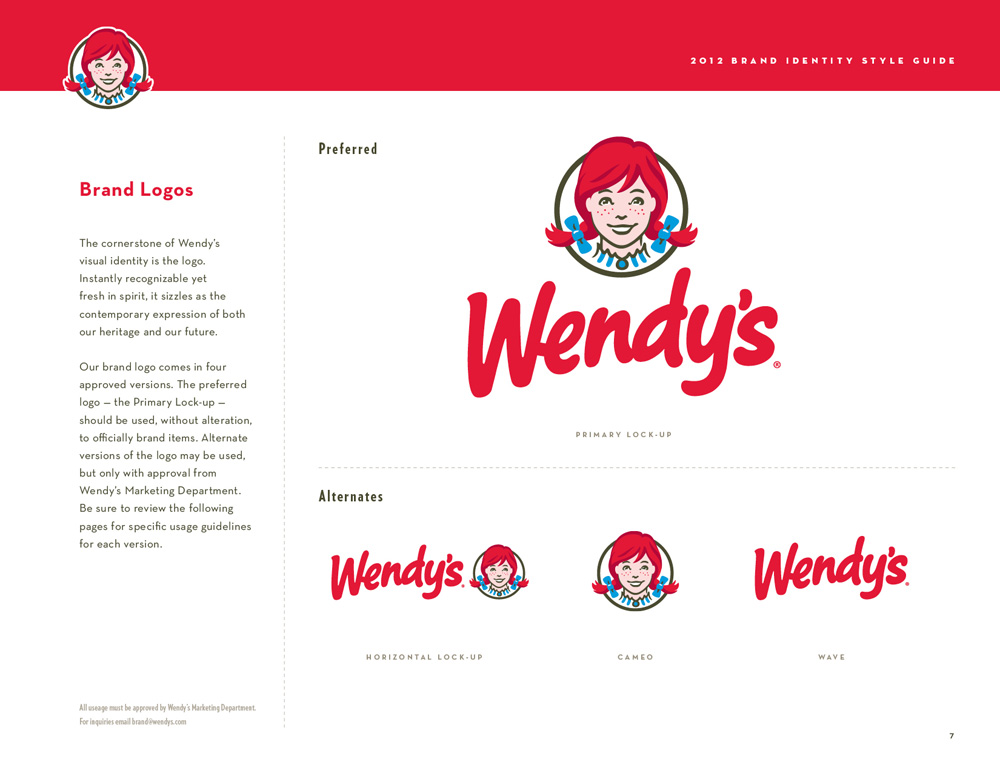
Everything you do contributes to your personal brand. Create a personal style guide similar to what the brands use. This way you have a consistent representation of your personal brand.
This should include the way you dress, carry yourself, behave with others, and even write and respond to emails.
14. Create a content strategy
Even though I mentioned creating a marketing strategy already, I feel it's important to list this on its own. Not everyone will create an overall marketing strategy or social media plan. At the very least, you should create a content marketing strategy.
Much of your branding will revolve around content.
You'll use content to build authority and show your expertise. You'll create guest posts to generate referral traffic and links. You might create short videos to share your ideas.
A content strategy can help you maintain a consistent schedule and generate the right topics for your audience as well as give you the greatest chance of growing your personal brand.
Moz has created a terrific content strategy framework you can use to plan your own.
15. Perform a competitive evaluation
Personal brand building isn't a popularity contest, but it does pay to know where you stand in the crowd.
Occasionally, you can collect some data, e.g., from Google trends, that will display the general query interest around your personal brand.

You want to know some of the key metrics around your brand so you can pivot and act accordingly.
This data is from Buzzsumo.

In the early stages of building your personal brand, you may or may not be selling anything. Regardless of your approach to monetization, you have competitors. They'll fall into two categories:
- Direct competitors, competing for your audience's money
- Indirect competitors, competing for your audience's attention
Once you've identified your audience, you need to take stock of the industry and find out who is turning the heads of your audience and what they're using to keep them engaged.
You don't want to mimic your competitors. That's bad. Remember, you want to be unique.
A competitive evaluation will give you the insight to take whatever your competitors are doing and do it 10 times better so you can capture and hold the attention of your audience.
Conclusion
Your personal brand is how the world will see you. For that reason, you need to polish your brand and give it a strong start, out of the gate. Starting with an unpolished and uninteresting brand is only going to hurt your efforts.
Including these elements in the launch of your brand will connect you with the right people. Those people will begin to identify you with a specific industry or area of expertise. As you share information and build rapport, you'll be well on your way to becoming a trusted authority in your niche.
It won't take long before the right opportunities will present themselves, and your branding efforts will begin to pay dividends.
Have you started building and promoting your personal brand? Which elements do you think are most important for making you stand out in your industry?
Online Marketing News: Bird's Eye View, FTC Skepticism and Facebook for Business


Infographic: Latest Twitter Study Sheds Light on Just How Well Video Is Doing
Based off of Twitter's annual Online Video Playbook, this infographic shows what's cleverly referred to as 'The Bird's Eye View of Video' on Twitter. For example, 93% of the video views on Twitter are on mobile. Users who watch video want breaking news, information, and viral content the most, followed by entertainment and celebrity content. AdWeek
The FTC Is Skeptical When Celebrities Are Paid to Like Your Product
The FTC is investigating a few big name brands for bending the rules that govern paid celebrity endorsements. Of course, rules regarding endorsements from celebrities aren't news to marketers, but the onset of digital marketing did prompt new rules and regulations. The one thing that hasn't changed? Disclosure. Entrepreneur
Facebook Set to Launch 'Facebook at Work' Next Month
Facebook is launching 'Facebook at Work' -- a private network for your business -- in the next three to four weeks. This will allow inter-office communication in a known format for larger, or even smaller, organizations. The network exists separately from personal profiles so there's not as much temptation to use personal Facebook during work time. Social Media Today
Content Marketing Takes a Turn for the Better: New 2017 Research
MarketingProfs and Content Marketing Institute paired up to produce their B2B Content Marketing 2017: Benchmarks, Budgets, and Trends -- North America, and the findings are fascinating. Most notably, marketers are more positive about their content marketing efforts than they were in the previous year. Read the full report, it's full of great information. Content Marketing Institute
Snapchat reveals its $130 Spectacles and rebrands as Snap Inc.
Snapchat revealed Spectacles, a $130 pair of sunglasses with a 115-degree lens camera. According to The Next Web, "content recorded using the glasses is automatically pushed to the Memories section of the Snapchat application in a new circular video format - which can be played full screen in any orientation - via Bluetooth or Wi-Fi." The Next Web

Salesforce, Google, Microsoft, Verizon are all eyeing up a Twitter bid
TechCrunch reports: Twitter continues to inch its way to a sale process, and the latest developments come in the form of alleged bids from potential buyers ... we have also independently heard that both Google and Salesforce are interested in buying the company. We have additionally heard that Microsoft and Verizon have also been knocking." What, if anything, could this mean for Twitter marketing? TechCrunch
Google (finally) launches cross-device retargeting
According to Marketing Land, Brad Bender, VP of display and video advertising at Google revealed breaking news about Google AdWords retargeting: "We're introducing cross-device remarketing for Google Display Network and DoubleClick Bid Manager to help you reach the same user across devices, apps, and sites." This means marketers can target the same users, across devices, for a more cohesive experience. MarketingLand
Facebook Allowing Advertisers to Create Rules for Turning Off Ads, Email Alerts
According to recent information submitted to SocialTimes, "Facebook appears to have given advertisers the ability to establish rules to automatically turn off ad or send email alerts once certain criteria are met." The report comes complete with screenshots for reference, we'll have to keep an eye out for this developing story. SocialTimes
What were your top online marketing news stories this week?
I'll be back next week with more online marketing news! Have something to share? Drop it in a comment or tweet to @Tiffani_Allen or @toprank.
The post Online Marketing News: Bird's Eye View, FTC Skepticism and Facebook for Business appeared first on Online Marketing Blog - TopRank®.

